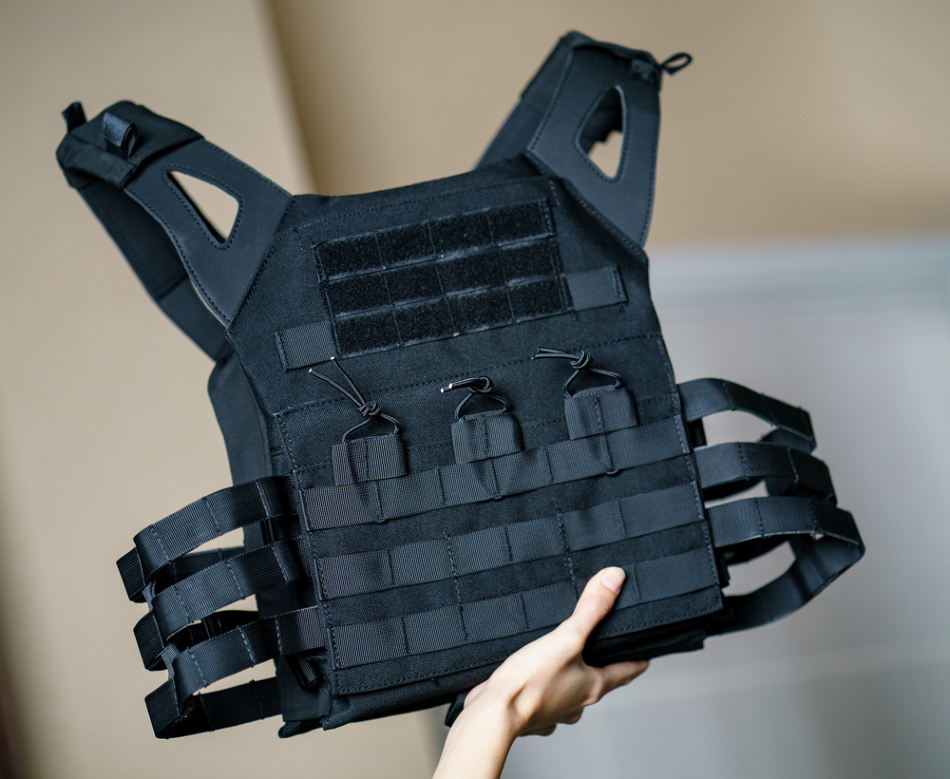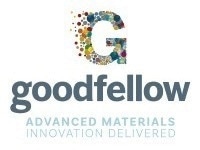In this interview, Dr. Aphrodite explains the role that Goodfellow plays in sourcing materials that can ensure durability and long-term cost effectiveness for the defence industry.
Ensuring Durability and Long-term Cost-Effectiveness for Materials in the Defence Industry
The main challenge of the defense industry is sourcing materials that can ensure durability and long-term cost effectiveness. How can Goodfellow support the defense industry with these ever-growing challenges?
Goodfellow supplies materials of high standards, that come with the certificate of analysis and with technical data documentation. This documentation will prove the purity or the mechanical properties of the materials, which means that we are reassuring our customers that our materials are of high quality.
The process is an ongoing one and it is confidential for each customer, especially for those in the defense industry. We have supplied materials for several years to the defense sector. This trustworthy relationship that we have developed reassures our customers that we can provide the best solution to their challenges and they can fulfil their goals.
In general, the materials we're providing to the defense sector are high-quality materials, and we are characterizing or producing them according to customer specifications.
The characterization of the materials is very important for the defense sector. The technical teams and the researchers in the sector collaborate until they are completely confident in the material they are going to be provided with from Goodfellow. That means that this process is very detailed and we are reassuring the customer in each step that they will have the material according to their specifications and requirements.

Image Credit:Shutterstock/VanderWolf Images
Can you tell us about the process of selecting niobium-titanium wire for superconducting magnets? Why was Goodfellow selected as the material provider?
With high-energy accelerator technologies, you can derive very important data. For example, you can inspect cargo, or you can inspect a chemical or biochemical threats. You are deriving a data that is very important for defense and security.
The customer came to us and discussed their application in high-energy accelerators, for which they're using superconducting magnets. We then discussed the material, the conditions that this experiment is being carried out in, and about what the requirements would be for the magnetic fields if they are applied.
The customer came to us willingly to produce coil windings for superconducting magnets. There are two kinds of materials that you can supply for this usage. For example, you can have a niobium-titanium alloy, or you can have a niobium-tin alloy. These niobium-titanium or niobium-tin alloys can be produced in wire-thin filaments about 20 microns in diameter and they are all embedded in a copper matrix.
The copper matrix is used because first of all it will be a robust material, and second of all, it will enable the magnetic field to pass through it and the electric field. Therefore, we had to decide which material is best for our customer. The customer suggested that the magnetic field that they're going to apply will be around 9 to 10 Tesla at the most. This means that they knew niobium-titanium was the most suitable material, but for which reasons?
One reason was that the niobium-titanium material can withstand a nine to 10 Tesla. It was also a cost-effective material. Although niobium-tin can withstand more magnetic field, it's very hard to process. This was how and why we concluded as a technical team that the niobium-titanium alloy was the best for our customer.
Graphene, a sheet of single carbon atoms bonded together, is commonly used for computers and electronics. Is this a material that could be used in the defense industry due to its incredible strength and lightweight structure?
Graphene can be used in defense and security. For example, Imperial College researchers had an idea of how they could make a vest lightweight and even mechanically better than it is at the moment. They considered interfering in the inter-layer of Kevlar vests, but the challenge was removing the ceramic shell of the Kevlar, or body armor.
At the beginning of this project, the researchers started to introduce spider silk, but it's very difficult to produce and it is also very expensive. As a result, the researchers turned to silkworms, but the silkworms do not provide the same mechanical strength as the spider silk.
They then added graphene, which not only enhanced the mechanical strength of the silkworms, but also made the material more lightweight, which meant that the body armor and the vest for a soldier, for example, would be easier to carry and wear.
Using the graphene as a solution for a lightweight material, by producing a composite material which is more lightweight, it can also be used for helmets. This work will make soldiers, for example, more efficient and effective for their mission.
Regarding aircraft bodies, graphene has been researched and has been proven to be able to provide aerodynamic properties. This means that there is less fuel consumption as well. It has also been proved that graphene can be used as a paint on the wings for de-icing, for example.
In addition, graphene has been proven to withstand lightening. That's very important for aviation industries, not only military aviation, but civil aviation, too, because it has been proven that 70% of accidents occur because of lightening.
The only bottleneck that occurs when using a graphene composite material on aircrafts and in civil and defense aviation is that the production of graphene is very expensive. However researchers today have stated that they will overcome this problem and they will develop a cost-effective solution for the production of graphene and graphene composites.

Image Credit:Shutterstock/MBLifestyle
Can sheets of graphene infused into a bullet proof vest stop the force and speed of a bullet hitting the body?
Graphene has significant potential in bullet-proofing technologies. Graphene embedded in various mattresses, for example, polymeric mattresses, improved the performance and especially the mechanical performance of the composite material.
There has been varied research on graphene and its ballistic properties. It has been demonstrated that graphene can provide better ballistic limit and better kinetic dissipation and absorption. Researchers at the University of Massachusetts Amherst, have laser overheated gold filaments to reproduce gun powder.They were trying to suit layers of graphene and were investigating this phenomenon.
They have found that graphene dissipates kinetic energy and forms a cone shape at the point of the bullet, and it also started cracking gradually. The cracks are a weakness of a single layer of graphene, but you can overcome these cracks either by using multilayer graphene or by embedding the graphene in the polymer matrix.
This prevents the cracks spreading and minimizes the effect of the bullet. In general, graphene performs two lifetimes better than Kevlar, and as we know, it is used for bulletproof applications. The kinetic dissipation of graphene is three times better than stainless steel, which is also commonly used.
Goodfellow works very closely with the defense industry. We can provide perovskites for sensor applications, Kevlar for body armor, or graphene and other materials. Goodfellow's range of materials is limitless, from polymers and ceramics to metals, composites for nanomaterials, and meta materials. I would say our whole range of products is applicable in the defense industry.
About Dr. Aphrodite Tomou
Aphrodite is the Technical Manager of Goodfellow Cambridge Ltd, a leading global supplier of materials for research, innovation and development in science and industry sectors. Goodfellow has an extensive range of products, which are monitored and enhanced by Aphrodite and her team. Aphrodite has a diverse background and wide-ranging knowledge of materials, from nanomaterials to metals, ceramics and glass.
She holds a PhD and Masters in materials science and engineering, has published several papers in peer-reviewed international journals, and presented at international conferences as an invited speaker. Her team consists of scientists and engineers having expertise in various material areas and processes. Together, Aphrodite and the Technical team assist researchers and engineers, on a day-to-day basis, in finding solutions to even the most challenging of research problems.
About Goodfellow

Goodfellow supplies metals, ceramics and other materials to meet the research, development and specialist production requirements of science and industry worldwide.
The Goodfellow group consists of four companies. The main administration, research laboratories and workshops are located at the Company's headquarters in Cambridge, England. The subsidiary offices in America, France and Germany provide an additional service.
Disclaimer: The views expressed here are those of the interviewee and do not necessarily represent the views of AZoM.com Limited (T/A) AZoNetwork, the owner and operator of this website. This disclaimer forms part of the Terms and Conditions of use of this website.